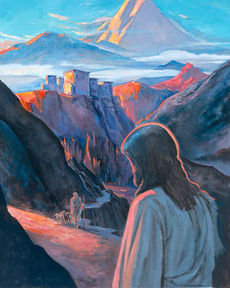Isa

En 1887, el médico ruso Nicolas Notovitch viajó a la ciudad tibetana de Himis, en lo alto de la cordillera del Himalaya, en busca de escritos antiguos sobre la vida de un hombre al que los budistas llamaban “Santo Isa”. En el monasterio de Himis, el lama principal le leyó manuscritos antiguos; entonces Notovitch escribió la historia de Isa, un israelita que viajó al Oriente para estudiar las sagradas escrituras y luego regresó para enseñarlas a su pueblo, en Palestina, y ahí fue crucificado.
Las similitudes entre el Santo Isa y Jesús fueron notables, esto llevó a Notovitch a concluir que los manuscritos proporcionaban el relato (ausente en la Biblia) de la vida de Jesús entre los 13 y los 30 años. Publicó la historia de su descubrimiento en 1890 en Life of Saint Issa (traducción al inglés The Unknown Life of Christ, 1895). Según Notovitch, los manuscritos originales Pali de la vida del Santo Isa estaban en la biblioteca de Lhasa, en Tibet, donde residía el Dalai Lama.
Critics claimed that Notovich’s account of the manuscripts was false. However, in 1922, Swami Abhedananda, a scholar and disciple of the Hindu Saint Ramakrishna, saw the same documents at Himis. Nicholas Roerich, Russian archaeologist, author, artist, philosopher saw the same, or similar, documents in 1925. Roerich also discovered Jesus’ journey to the East recorded in the oral history of the region. He said, “In what possible way could a recent forgery penetrate into the consciousness of the whole East?”
See also
For more information
Elizabeth Clare Prophet, The Lost Years of Jesus: Documentary Evidence of Jesus’ 17-Year Journey to the East.
Sources
Pearls of Wisdom, vol. 25, no. 58.
Elizabeth Clare Prophet, October 6, 1987.
